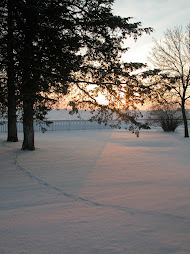I have a colleague who emigrated from Africa in 2006. Our work takes us out of our suburban office on occasion and because he doesn’t know his way around the area yet, I always drive. He’s very eager to get out and see his new hometown; we’ve ventured to downtown Minneapolis, to St. Paul, to Rochester and even to Western Wisconsin.
Yet even this orientation hasn’t been enough to muster in him the courage to explore the area in his own car. In the 13 months since arriving, he’s memorized exactly two routes -- the one from his home to our office and the one from our office to his cousin’s house.
The roads are very confusing, he tells me. “And people drive like maniacs.”
Well, America hasn't cornered the market on maniacal drivers. But our roads can be confusing – especially the way they are labeled. Can anyone explain, for instance, why there are different icons used for identifying county, state and federal roads? Does it really matter to a driver if the county, state or federal government paid for the road? And think about how we, who’ve been traveling roads for a lifetime, refer to certain spans – the Crosstown, for example. Is there a sign anywhere near Hwy. 62 that uses the term “Crosstown?” Finally, how does one explain the interstate highway system to a native of the Third World? And if an “I” before a number indicates a highway is part of the “interstate” system, how do we explain I-394, I-494 and I-694?
I can sympathize with this man. The roads in the city can be very confusing to a newcomer. Worse, they are very congested.
It would have been so much easier for him, I think, if he had settled in the country. Out here, there are only two kinds of roads – paved and gravel. And the distance between maniacs is much greater.
17 September 2007
Subscribe to:
Post Comments (Atom)






No comments:
Post a Comment